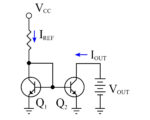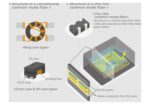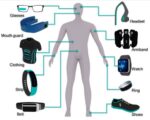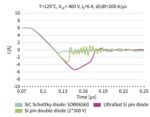Current mirrors are common circuits but are mostly invisible, except to designers of analog or mixed-signal integrated circuits who can use large numbers of current mirrors on a single chip. A current mirror copies a current through one active device (such as a BJT or MOSFET) by controlling the current in another active device. If […]
How do you make inductors with films, foils, and flat wires?
Wire wound structures are the most common, but far from only, way to make inductors for audio, power conversion, radio frequency (RF), and other applications. Inductors are key components in various circuits, and designers need to fully understand available options. This FAQ starts with a brief background on wirewound inductors and then digs into the […]
What are wirewound, carbon, and film resistors good for?
Resistance is one of the most basic concepts in electricity and electronics. And resistors are simple-looking devices. Given their apparent simplicity, the range of resistor types and their capabilities can be surprising. This FAQ looks at some common resistor types and tradeoffs between stability, precision, size, power handling, and so on. It briefly considers mounting […]
How are RF connectors shrinking for mmWave systems?
RF connectors for mmWave are shrinking to accommodate higher performance and higher densities in 5G communication networks and devices. This FAQ begins by looking at today’s 4.3-10 coaxial connectors, which were developed to solve the performance issues inherent to the previous 7-16 connectors. It then examines how the technologies unveiled in the 4.3-10 are further […]
Where are miniature connectors for wearables headed?
Miniature connectors for wearables continue to shrink, and they are increasing in performance, carrying higher bandwidth signals and more power. Wearables add functionality, resulting in more components and interconnects in the same size package. Applications range from smartwatches and health monitoring devices to augmented reality/virtual reality (AR/VR) devices, as well as medical and military systems. […]
How are optical interconnects being miniaturized?
Fiber optic connector trends include a proliferation of new and smaller designs and, according to NTT, optical connector standardization activities are one of the most active areas at the International Electrotechnical Commission (IEC). As of February 2021, IEC SC 86B (Fibre optic interconnecting devices and passive components) published the second largest number of documents in […]
What connectors are there for woven electronics & e-textiles?
Woven electronics and electronic textiles (e-textiles) are emerging areas of technology. E-textiles are being developed that can monitor physiological conditions, deliver medical treatments, or be used as human machine interfaces (HMIs). Maintaining reliable connections between electronic devices embedded into clothing or other soft materials is challenging. There are issues related to washability and durability, in […]
What are triacs, diacs and quadracs good for?
Triacs, diacs, and quadracs are ac power control semiconductor devices used in line frequency applications such as lighting control, motor speed control, and temperature modulation. They can be found in consumer and industrial settings. Triacs are a member of the thyristor family and have a four-layer structure. Diacs (DIode AC switch) are used to trigger […]
What’s the difference between Shockley and Schottky diodes?
Neither a Shockley diode nor a Schottky diode are single p-n junction devices. A Shockley diode has a four-layer thyristor structure with a typical forward drop of 800 mV. It’s called a diode because it has two leads. A Shockley diode is essentially a SCR with the gate not connected. In a Schottky diode a […]
What’s different about space-rated connectors?
Space-grade connectors are generally spin-offs of military-grade designs. Compared with common commercial connectors, there’s a much smaller variety of space-grade connectors. However, commercial off-the-shelf (COTS) and COTS+ connectors are increasingly used in cost-sensitive missions such as CubeSats. This FAQ begins with a look at the unique operating conditions in space and how those conditions impact […]









